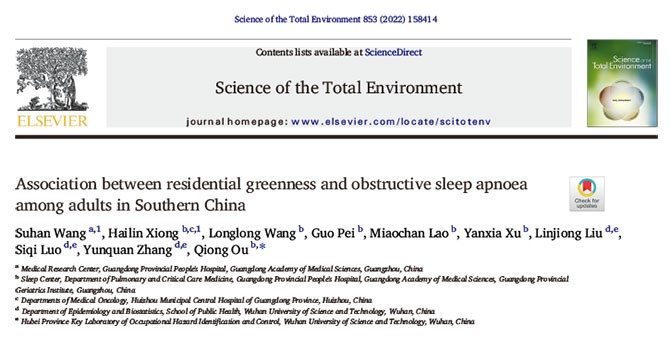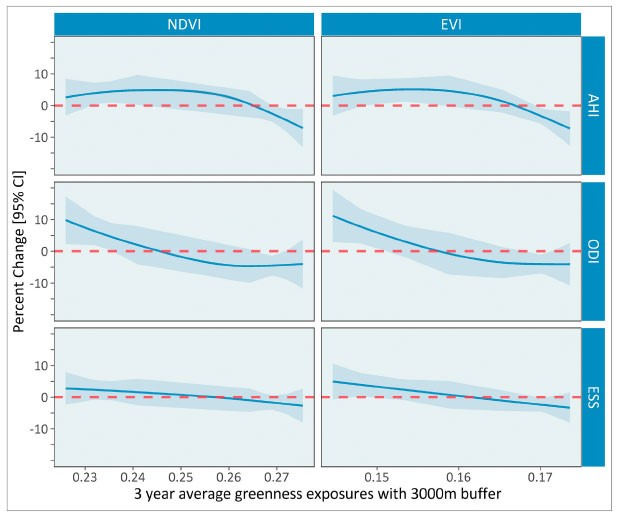

Professor Ou Qiong (the only corresponding author), from the Respiratory and Sleep Center of the Geriatric Medicine Institute of our hospital, Dr. Wang Suhan (first author) from the Medical Research Department and other cooperators used the sleep apnea clinical database of the Respiratory and Sleep Center of our hospital from January 2005 to December 2015 and explored the relationship between residential greenness and obstructive sleep apnea among adults for the first time in the world. On September 13, 2022, they published the original research paper entitled Association between Residential Greenness and Obstructive Sleep Apnoea among Adults in Southern China in Science of the Total Environment (IF=10.753).

Obstructive sleep apnea (OSA) is a common disease. The cause and mechanism of the disease are unknown. There are 176 million OSA patients in China, and delayed intervention will greatly increase the morbidity and mortality of hypertension, heart disease, stroke and other related diseases. Therefore, identifying the environmental factors affecting OSA has very important theoretical and practical guiding significance to further explore the factors that cause the occurrence and development of OSA, and to formulate corresponding disease prevention and control measures.

Figure 1 Exposure-effect relationship between greenness exposure level and OSA index in the first 3 years of sleep monitoring
The study results suggest that increasing greenness exposure levels may bring significant benefits to the improvement of the OSA index of adults, which may be instructive to the prevention of OSA among adults in China. When the 3-year normalized difference vegetation index (NDVI) around a home increases a quartile spacing, the apnea-hypopnea index (AHI) and oxygen desaturation index (ODI) reduce significantly by 9.8% and 14.5% respectively. When the 3-year enhanced vegetation index (EVI) around a home increases a quartile spacing, AHI and ODI reduce significantly by 7.8% and 10.8% respectively. In addition, the study also found that male adults who are 65 years or above may be sensitive to the effect of greenness exposure on the OSA index.
Our hospital is the institution of the first corresponding author of this study and our research contents are novel and important. The research results will provide a theoretical basis and targeted suggestions for the scientific prevention and control of OSA in China. The research team led by Professor Ou Qiong from the Sleep Center will continue to conduct interdisciplinary research in clinical medicine and environmental science and do more work in exploring the impact of air pollution and nightlight pollution on OSA and sleep disorders in the future.
Respiratory and Sleep Center